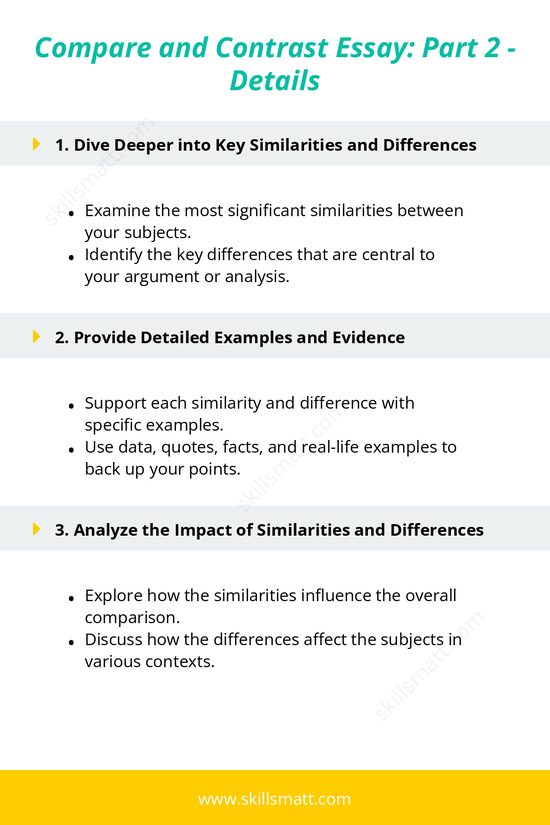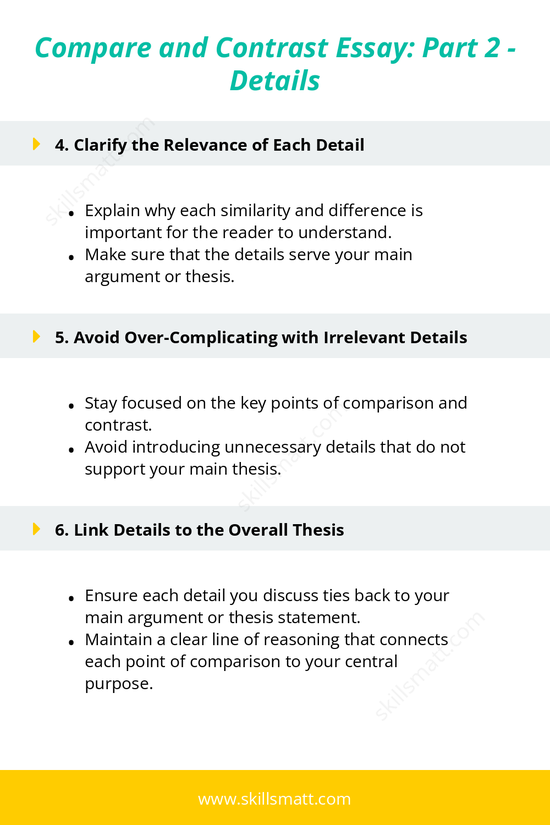Compare and Contrast Essay: Part 2 - Details
1. Dive Deeper into Key Similarities and Differences
- Examine the most significant similarities between your subjects.
- Identify the key differences that are central to your argument or analysis.
2. Provide Detailed Examples and Evidence
- Support each similarity and difference with specific examples.
- Use data, quotes, facts, and real-life examples to back up your points.
3. Analyze the Impact of Similarities and Differences
- Explore how the similarities influence the overall comparison.
- Discuss how the differences affect the subjects in various contexts.
4. Clarify the Relevance of Each Detail
- Explain why each similarity and difference is important for the reader to understand.
- Make sure that the details serve your main argument or thesis.
5. Avoid Over-Complicating with Irrelevant Details
- Stay focused on the key points of comparison and contrast.
- Avoid introducing unnecessary details that do not support your main thesis.
6. Link Details to the Overall Thesis
- Ensure each detail you discuss ties back to your main argument or thesis statement.
- Maintain a clear line of reasoning that connects each point of comparison to your central purpose.


